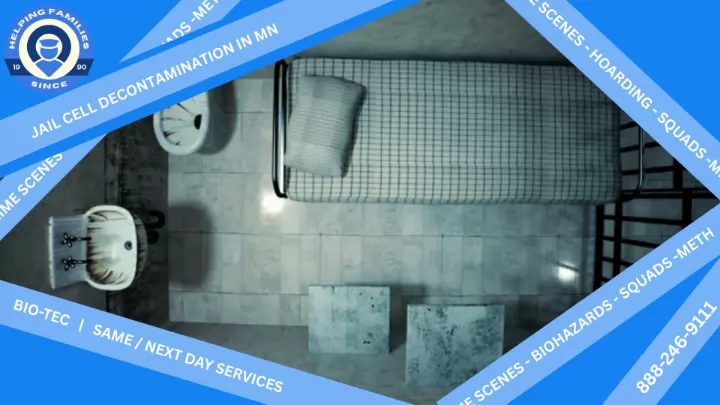What happens if biohazards seep under vehicle carpeting into subfloor areas?
Subfloors are dismantled if possible, cleaned, sanitized, and reconstructed to ensure safety.
What cleaning protocols apply for contamination in vehicles used for transport during riots?
Vehicles are decontaminated to address potential exposure to tear gas, bodily fluids, and debris.
How are vehicles sanitized after detainees with chronic illnesses cause contamination?
Comprehensive sanitization focuses on areas of direct exposure and commonly touched surfaces.
Are pigeon droppings hazardous to pets?
Yes, pets can be exposed to harmful bacteria and fungi if they come into contact with contaminated areas.
How is the disposal of waste managed in crime scene cleanup?
Waste is meticulously contained, transported, and disposed of at certified facilities following regulatory guidelines.
How does air quality testing benefit workplaces?
Air quality testing in workplaces ensures a safe environment for employees, reducing the risk of health issues caused by pollutants. It also improves productivity and compliance with health and safety regulations.
How long does the meth testing process take?
The duration of the meth testing process can vary depending on the size of the property and the extent of contamination. Generally, collecting samples may take a few hours, and laboratory analysis can take several days to a week. Some laboratories offer expedited services for faster results.
What is biohazard cleaning?
Biohazard cleaning involves the removal and sanitization of hazardous materials such as blood, bodily fluids, and infectious agents.
What are the best products for decomposition odor removal?
For professional-grade decomposition odor removal, a combination of specialized products is often required, moving beyond typical household cleaners. Enzymatic cleaners are paramount for initial cleanup, as they contain enzymes that break down organic matter, effectively eliminating the source of the odor. Brands like BioKleen Bac-Out or professional enzyme digesters are highly effective. For surface cleaning, hospital-grade disinfectants with strong virucidal and bactericidal properties are essential to not only clean but also sanitize the area, preventing the growth of odor-causing microorganisms. After initial cleaning, odor neutralizers are crucial. These products dont just mask odors but chemically alter or encapsulate the odor molecules. Look for industrial-strength formulations. For pervasive airborne odors, ozone generators are incredibly effective as they produce ozone (O3), which oxidizes and destroys odor molecules. However, these must be used with extreme caution in unoccupied spaces due to ozones respiratory hazards. Hydroxyl generators offer a safer alternative for occupied spaces, as they produce hydroxyl radicals that mimic natural outdoor deodorization processes. Activated charcoal can be used in bowls or sachets to absorb residual odors in the air. For odors absorbed into porous materials like subflooring or drywall, professional-grade encapsulation primers or sealers are often applied after cleaning and before new finishes to prevent the odor from off-gassing into the air. Companies like Kilz offer heavy-duty odor-blocking primers. The key is to select products specifically designed for biohazard and decomposition odors, as regular air fresheners or deodorizers will only provide temporary masking.
How do professionals clean up rodent droppings?
The process includes assessing the site, wearing protective gear, removing droppings, disinfecting surfaces, and safely disposing of waste. Professionals follow strict safety protocols to minimize health risks.
